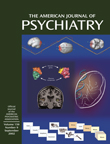Image, Language, Brain
This book originated from papers first presented in Tokyo, November 1998, at the first Mind Articulation Project Symposium, the goal of which was to examine, among other things, attempts to unify the linguistic theory and brain science, as has been attempted previously in the study of the visual system.
In addition to the introduction, “Mind Articulation,” there are 12 chapters, the titles of which present a succinct summary of the book’s subject matter: “Linguistics and Brain Science,” “Cognitive Neuroscience of Speech Processing,” “How Infants Acquire Language: Some Preliminary Observations,” “The Speaking Mind/Brain: Where Do Spoken Words Come From?” “The Dependency Locality Theory: A Distance-Based Theory of Linguistic Complexity,” “The Neuronal Dynamics of Auditory Language Comprehension,” “Neural Control of Cognition and Language,” “Imaging Neuroscience: System-Level Studies of the Physiology and Anatomy of Human Cognition,” “Central Control of Voluntary Movement as Studied by Multidisciplinary Noninvasive Approaches,” “Neuromagnetic Inverse Modeling: Application of Eigenstructure-Based Approaches to Extracting Cortical Activities From MEG Data,” “Competitive Mechanisms Subserve Selective Visual Attention,” and “Origin of Visual Imagery: Its Neurophysiological Basis.”
There is no substitute for reading the book. A book review 10 times the length of this one could not do justice to its complex subject matter. However, I can mention a few areas that made a special impression. For example, it was exciting to see how experimental paradigms and imaging techniques allowed the researchers to use linguistics to study “computation in the brain.” I also found it fascinating that newborns can differentiate between languages. Apparently infants can pick up on differences in rhythm, for example, in the speech of the mother.
It was nice to see a diagrammatic illustration summarizing the brain areas activated by different core processes in word production. It shows that the network subserving word production is almost completely left lateralized with the exception of sensorimotor regions involved in phonetic encoding and/or articulation and bilateral cerebellar involvement in overt word production. Throughout the book there are a number of glossy plates depicting, for example, brain imaging of regions activated by the core processes in word production.
In the chapter on imaging neuroscience, Richard Frackowiak describes how attention results in altered patterns of neuronal activation in the prefrontal cortex and other language-related areas. Repetition and increased familiarity with the activity lead to alteration of this pattern of activation, which is once again reversed if new challenges are introduced to the task.
In the chapter dealing with central control of voluntary movement, I found it of interest to note that the answer to the questions, “Where in the brain and when does the will to move occur?” and, “Where in the brain and when does the will to stop movement occur?” is that essentially the same cortical structures come into play, with the caveat that precise mechanisms warrant further study.
In the last chapter, which deals with the origin of visual imagery, Yashushi Miyashita describes a number of experiments using monkeys to examine the neuromechanisms underlying memory retrieval and the consolidation process. He devised a visual pair association type of task that required the monkey to encode associates of relations between individual objects and to retrieve the high-level internal representation (“image”) of the paired associate according to a core stimulus. Miyashita also notes that in human beings imagery is more flexible in necessitating another subsystem that uses association memory and that constructs local representation on the basis of a global top-down attentional shift. He hypothesizes that the subsystem is located in the dorsolateral prefrontal cortex but warns that evidence is still scanty. He ends this chapter with the statement that “characterization and neurophysiological analysis of this subsystem would provide further insight into the neural basis of imagery and its conscience activation.”
Each chapter is followed by a copious reference list, indicative of the wide body of research that has already begun in the different fields with which the authors included in this work are concerned.
In my opinion, this book will be of particular interest for those interested or working in the areas of linguistics and neuroscience. A product of the first Mind Articulation Project Symposium, in addition to the valuable contribution it makes in its own right, this book lays valuable groundwork for a second symposium in the not too distant future, devoted to essentially the same aim as the first—further unification of linguistic theory and brain science.



